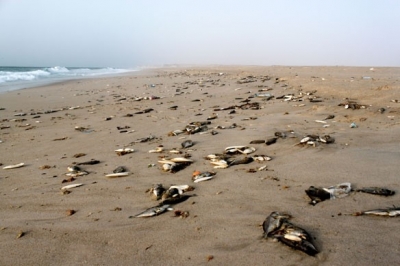
Many of the birds had travelled from as far as Europe, Africa and Northern America through oceans and mountains, crossing continents and countries with, perhaps, little idea that death awaited them at their wintering destination – Sambhar Lake, Rajasthan.
Early November, bird carcasses began appearing on the banks of the Sambhar Lake, a 230-sq. km. inland saltwater body located 80 km southwest of Jaipur. Tourists, birdwatchers and villagers who visited the lake spotted lifeless birds dotting the lake’s bank.
The initial death toll was at 1,500. Soon rescue teams, including civil workers, volunteers, forest officials and NGOs swung into action – counting and collecting the carcasses. Live and suck ones were rescued and transferred to rescue centres for treatment. However, the toll steadily rose, and by mid-November, the official death count was at 18,000 birds, excluding the casualty towards the Nagaur side of the lake. As this article took shape, reports said that about 100 birds were being found dead every day.
Scientists were initially at a loss to explain the mysterious deaths. Samples of bird carcasses were sent to the Indian Veterinary Research Institute (IVRI) in Bareilly, the High Security Animal Disease Laboratory (HSADL) in Bhopal, the Wildlife Institute of India in Dehradun and the Salim Ali Centre for Ornithology and Natural History (SACON) in Coimbatore.
The initial lab results ruled out avian flu, and subsequent reports confirmed that the birds were hit by avian botulism – typical symptoms of which include weakness, lethargy and inability to fly. Birds of 29 species were found to be affected. These included water birds such as stilts, shovellers and sandpipers, gulls, terns, and also bee-eaters and kites. Many of them were migratory birds.
However, the cause was being debated by scientists and conservationists. Some biologists said that food sources for migratory birds could greatly decline with low water levels and high salt content in salt water lakes and that could have led to the mass deaths. Other explanations include effluents from salt manufacturing degradation due to illegal salt mining and excessive groundwater extraction.
Picture Credit : Google




